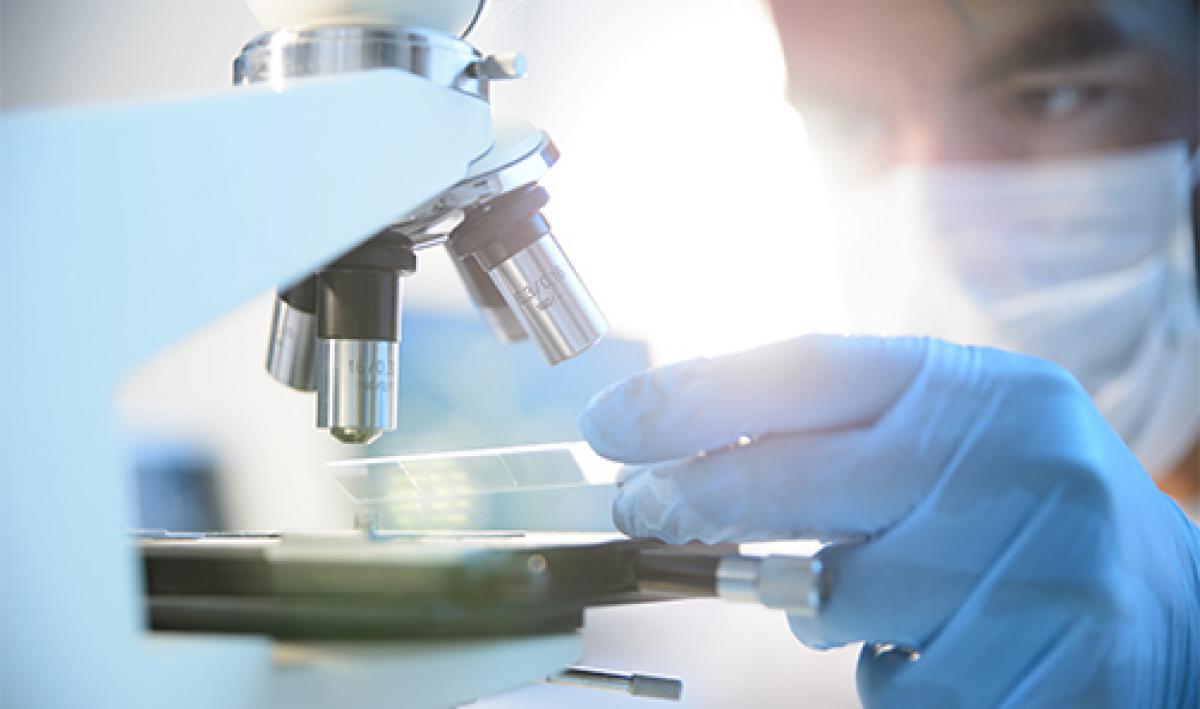Live
- RG Kar issue: Tension flared over parallel protests by Congress, SUCI(C) outside CBI offices
- After furore, Central Railway revokes order to raze Lord Hanuman Temple at Dadar
- Now hoteliers' body in Bengal's Alipurduar shut doors for Bangladeshi tourists
- District Collector Encourages Students to Utilize Government Facilities for a Better Future
- Per capita availability of fruits, vegetables increases in India
- FII buying reaches Rs 22,765 crore in Dec as economic growth stays resilient
- National Energy Conservation Day 2024: Date, Importance, and Easy Ways to Save Energy
- Gastronomic trouble: After 'disappearing' samosas Himachal CM in row over red jungle fowl
- Meaningful dialogue a priceless jewel of democracy: Jagdeep Dhankhar
- CM Revanth Reddy Advocates for Gurukuls as Talent Development Centers
Just In

In today\'s world, when infertility is an issue that many deal with, a study finds a new technique to examine human sperm count, without killing them.
New Delhi: In today's world, when infertility is an issue that many deal with, a study finds a new technique to examine human sperm count, without killing them.
Scientists at the University of Sheffield have developed a new technique to examine human sperm without killing them, helping to improve the diagnosis of fertility problems.
The Magnetic Resonance Spectroscopy technique uses powerful magnets and works like radar by firing pulses of energy at the sperm sample inside a purpose built scanner and then listening to the echoed signal by the molecules in response. This could help to distinguish between populations of good or poor sperm.
Unlike other more destructive examination methods, the low energy pulses do not damage sperm, meaning they could potentially go on to be used in IVF treatment. This is similar to a technique that doctors use to capture images of cells and tissues inside the body.
The novel approach was pioneered by physicists from the University of Sheffield's Academic Unit of Radiology working together with fertility experts from the University's Academic Unit of Reproductive and Developmental Medicine in the interdisciplinary spermNMR project.
Professor Martyn Paley, from the University's Department of Infection, Immunity and Cardiovascular Disease, said, "The technique of Magnetic Resonance Spectroscopy has been previously used to examine the molecular composition of many cells and tissues in other diseases such as cancer, but it has never previously been used to examine live sperm. As such, these results are a world first."
During the study, scientists examined fresh sperm samples from healthy volunteers and patients for just over an hour.
From the data gathered scientists were able to build up a profile of the molecules present in the sperm and how they differ between samples.
Professor Allan Pacey, fertility expert from the University of Sheffield, who was part of the spermNMR study team, said, "Most of the advanced techniques we have available to examine the molecules in sperm end up destroying them in the process by either adding stains or by breaking open their membranes to look at the contents.
"To potentially have a technique which can examine the molecular structure of sperm without damaging them is really exciting."
One of the technical challenges that the team faced was how to detect the molecules that were present in sperm rather than those present in semen, the fluid in which sperm are ejaculated.
To do this, the team examined a number of 'sperm washing' techniques that are currently used to prepare sperm for IVF. They found that by spinning the samples very fast in a centrifuge several times they were able to reduce the background noise from molecules in semen to a point where they could reliably detect the ones from sperm.
Research Associate Dr Sarah Calvert from the spermNMR team, said, "Washing the sperm in a centrifuge is a critical step for this technique to work as any contamination from seminal plasma can also be detected by the scanner. But by adding an extra spin cycle to the techiques that are commonly used in IVF we were able to minimize that contamination."
The results of the study show that a number of molecules such as Choline (vitamin-like essential nutrient) and Glycerophosphocholine (a natural choline compound found in the brain), Lipids (common components of sperm cell membranes) and Lactate (an end product of cellular energy usage) were significantly different between samples of sperm separated into 'good' and 'poor' populations.
Research Fellow Dr Steven Reynolds explained, "The fact we can detect differences in molecular composition between samples of 'good' and 'poor' sperm is really significant because it opens up the opportunity for us to develop a novel biomarker to help with diagnosis.
"Or it might one day allow us to design specific therapies for men with poor sperm that might help give them a boost."
The study has been published in Molecular Human Reproduction.

© 2024 Hyderabad Media House Limited/The Hans India. All rights reserved. Powered by hocalwire.com







